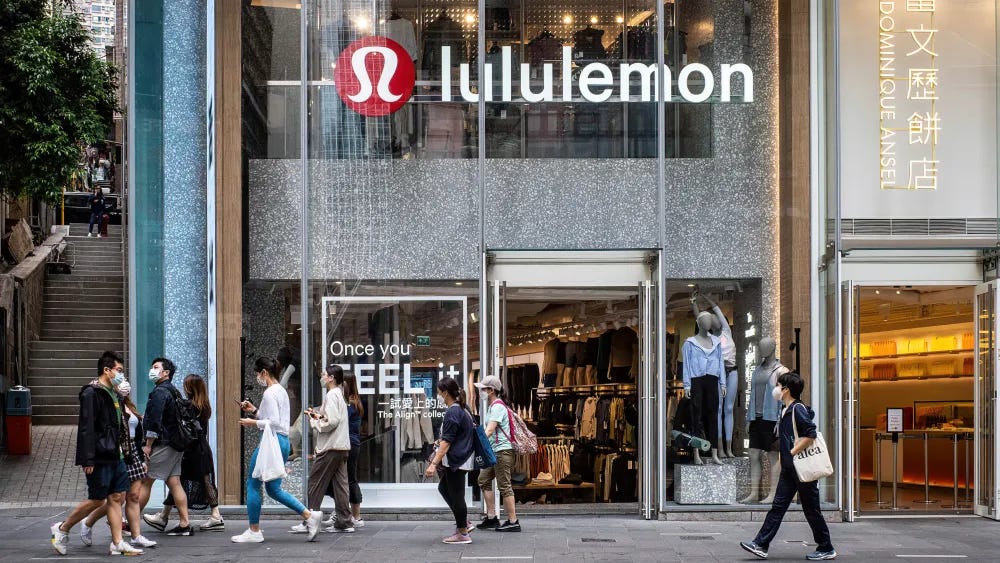Lululemon's Post-Earnings Plunge: Is the Athleisure Titan Losing Its Stretch?
A brutal after-hours trading session saw Lululemon (LULU) stock plummet, leaving investors asking one critical question: Is this a temporary speed bump for a great company, or a sign of deeper cracks in the foundation?
The market's verdict was swift and unforgiving. Despite beating Q2 earnings per share (EPS) estimates ($3.10 vs. a guided $2.85-$2.90), the company missed on revenue and, most critically, slashed its full-year guidance for 2025. The reaction was a double-digit percentage drop in the stock price, erasing billions in market value in a matter of minutes.
Let's break down the good, the bad, and the ugly from this pivotal earnings report and what it means for the future of this premium brand.
The Ugly: A Drastic Cut in Outlook
The headline pain point was the severe reduction in full-year 2025 guidance. Lululemon now expects:
Revenue: $10.85B - $11B, down from a prior forecast of over $11B. This represents a significant slowdown from 2%-4% growth (4%-6% excluding an extra week in 2024).
EPS: $12.77 - $12.97, a dramatic drop from the previous guidance of $14.58 - $14.78.
This wasn't just a minor tweak; it was a fundamental reset of expectations. The primary culprits? A challenging U.S. market and significant tariff headwinds.
The Bad: Stale Products and Margin Erosion
In a moment of stark honesty, CEO Calvin McDonald admitted to execution missteps, stating, “We have become too predictable within our casual offerings... Our lounge and social product offerings have become stale and have not been resonating with guests.” For a brand built on trend-setting and premium appeal, this admission is a major red flag.
Furthermore, the financial mechanics are under pressure. Gross margin is now expected to decrease by approximately 300 basis points for the year. This is largely driven by two factors:
Increased Tariffs: External trade policy is taking a direct bite out of profits.
Removal of De Minimis: CFO Meghan Frank revealed that two-thirds of U.S. e-commerce orders had previously benefited from the de minimis provision (which allows goods under a certain value to be imported tax-free). Its removal is a significant and direct hit to margins.
The Good: International Strength and Brand Resilience
It wasn't all bad news. The bull case for Lululemon, though bruised, is not broken.
International Growth: The brand continues to fire on all cylinders outside of North America. Revenue in China soared by 25%, and the "Rest of World" segment grew by 19%. This proves the brand's global appeal is potent.
Strong Brand Equity: As one pre-earnings analysis from Seeking Alpha ("The Market Is Overlooking Runway For Expansion") pointed out, Lululemon's brand loyalty is a powerful asset. The author argued that the company’s return on investment per store (ROIC/store) is 3.5x higher than peers like Nike and Adidas, suggesting a long runway for growth before saturation. Bulls argue that this brand "stickiness" will allow Lululemon to weather the current storm.
The Street's Reaction: A War Between "Buy the Dip" and "Falling Knife"
A scan of financial news outlets, Reddit, and X (formerly Twitter) reveals a deeply divided investor base.
The Bears: Critics are latching onto the "stale products" comment as an unforgivable error for a premium apparel company. They point to the slowing U.S. market—projected to be down 1-2%—as a sign the core business has peaked. For them, the stock is a "falling knife" with a valuation that was too high to justify any misstep.
The Bulls: The "buy the dip" crowd sees this as a classic overreaction. They point to the strong international growth as the future of the company and believe the U.S. product issues are fixable. They echo the sentiment that Lululemon is a best-in-class company, and this sell-off presents a compelling long-term opportunity to buy a great brand at a discount.
Conclusion: A Strategic Reset at a Crossroads
Lululemon is not a dying brand, but it is facing its most significant test in years. Its premium valuation demanded flawless execution, and management just admitted its performance was anything but.
The path to recovery now hinges on three key questions:
Can they innovate? Will the planned product refresh for Spring 2026 be enough to reignite excitement in the crucial U.S. market?
Can international growth carry the weight? Can the explosive growth in China and elsewhere offset the softness at home?
Can they defend their margins? How effectively can the company use pricing and supply chain initiatives to fight back against the brutal impact of tariffs?
For long-term believers in the brand's power, this painful drop may be the discounted entry point they've been waiting for. For more cautious investors, it’s a clear warning that even the most powerful athleisure titan can't outrun macroeconomic headwinds and internal fumbles forever. The next few quarters will be critical in determining whether this is just a stumble or the beginning of a much harder marathon.


